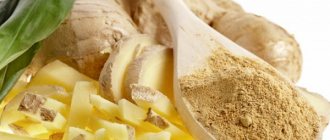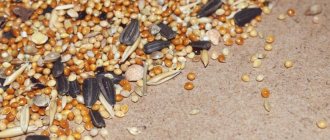Table of contents
- Medicinal properties of oats
- Oat decoction
- How to prepare oat decoction
- Healthy oat recipes
This was in the 90s of the last century. After working in the capital, I returned home to my family. Then something incomprehensible happened - I began to feel that my strength was leaving me. Every day the condition worsened: it seemed that it was not an illness that had happened, but life was gradually leaving me. My friends Lyudmila and Galina literally led me, exhausted, by the arms, to receive unction. I tell my father:
“Father, during Lent I drank chicken broth, I didn’t even have the strength to walk around the house.”
-Have you seen the horse? - the father asks in response. I was stumped by this question. “What does the horse have to do with it,” I think. And he seems to answer my thoughts:
- The horse is stronger than you, even though he has never eaten chicken soup in his life. Steam some oats and drink for three weeks. You will see that with God's help everything will get better.
And so it happened. With God's blessing and father's advice.
From a letter from reader Veronika Ivanovna Zasadskaya
Today I want to talk about a not very expensive, but effective medicine - oats. It's not just the crisis that forces people to look for alternative treatment options. The desire to get closer to nature and reduce the amount of “chemicals” entering the body are powerful motivators for finding really good natural remedies.
Oats are a cultivated cereal. It is the chemical composition that explains the unique restorative effect of oats.
Oats contain a lot of protein, as well as fats and carbohydrates, valuable methionine, polyphenols, and choline. A large number of microelements - potassium, phosphorus, magnesium, iron, calcium, zinc, cobalt, manganese, B vitamins (B1, B2), vitamin A, vitamin E, PP.
Eating oatmeal for breakfast is quite common in many countries. Perhaps the morning meal of oatmeal is associated mainly with Britain. Seeing how rich oats are in essential nutrients, I want to adopt this wonderful tradition.
Cirrhosis is different from cirrhosis!
Usually people believe that if a diagnosis of liver cirrhosis is made, then this is a death sentence. This is not always the case. There are different causes, forms and stages of liver cirrhosis. And depending mainly on the cause of the disease, the prognosis of the disease can be different. In some forms of cirrhosis, eliminating the cause of the disease leads not only to the cessation of progression, but also to the restoration of liver function. Such patients can live long, fulfilling lives, even if the disease was diagnosed at a very young age. Of course, in cases where the cause of the disease cannot be eliminated and the diagnosis is made at a very late stage (doctors call this decompensated cirrhosis), the prognosis is not favorable. In such cases, a liver transplant may be required.
Stomach diseases - gastritis, peptic ulcer:
Rinse the unpeeled grains thoroughly under running water (such grains can be bought at the market), dry well, placing them on a towel. Grind with a blender. Place half a glass of crushed raw materials in a saucepan, pour half a liter of hot water.
Bring to a boil, immediately reducing heat to low. Simmer like this for half an hour, stirring frequently. After time has passed, remove from heat and wait for the broth to cool. Add boiled water instead of evaporated water. Pour into a jar through several layers of gauze. Drink a glass (200 ml) between meals.
The main thing is to establish and eliminate the cause of liver cirrhosis!
Establishing the cause of the development of the disease is the primary task of the doctor, as it allows in most cases to eliminate the factor that caused the disease, prevent the progression of cirrhosis and the development of complications. The most common causes of cirrhosis are alcohol, hepatitis B and C viruses, as well as metabolic disorders with fat deposition in the liver. Less common are autoimmune (autoimmune hepatitis) and cholestatic diseases (primary biliary cholangitis, primary sclerosing cholangitis), hereditary diseases with accumulation of copper (Wilson-Konovalov disease) or iron (hemochromatosis) in the liver, and drug-induced liver damage.
Completely removable causes of liver damage include infection caused by the hepatitis C virus. Currently, medicine has safe and highly effective medications that make it possible to completely eliminate the hepatitis C virus from the body in a short course of therapy. Elimination of the hepatitis C virus, even at the stage of liver cirrhosis, leads to the prevention of disease progression, improvement and restoration of liver function.
There is also an effective treatment for liver cirrhosis resulting from chronic hepatitis B. This infection cannot be completely eliminated from the body, but there are medications that can persistently suppress the infection, stabilize the disease, preventing its progression and the development of complications. Unlike cases of liver cirrhosis caused by the hepatitis C virus, in the presence of the hepatitis B virus, treatment with an antiviral drug must be continued continuously throughout life.
Complete cessation of alcohol consumption is the main treatment for alcoholic cirrhosis of the liver, which leads to liver restoration and prevention of complications. Therefore, the prognosis for this disease depends not only on the doctor, but also to a large extent on the patient himself.
There are some forms of liver cirrhosis that are successfully treated with treatments that target the mechanism of injury rather than the cause. So, with genetically determined liver diseases, we cannot change genetics. But, for example, with Wilson-Konovalov disease, liver damage occurs due to excessive accumulation of copper in it, and the removal of copper from the body with special medications leads to restoration of the liver. This is one of the few inherited diseases that has very successful treatment. In such patients, liver cirrhosis is diagnosed more often in childhood and adolescence. Without treatment, they die at a young age. Under the condition of constant lifelong therapy with drugs that remove copper from the body, they live a full life (study, work, give birth and raise children). In hereditary hemochromatosis, liver cirrhosis develops due to excess iron, so removing iron (by simple bloodletting) changes the prognosis of the disease.
In case of liver cirrhosis as a result of autoimmune hepatitis, doctors also act on the mechanism of damage - they suppress pathological immune reactions with the help of corticosteroid hormones, azathioprine and other drugs. Treatment can stop or significantly slow down the progression of the disease. In primary biliary cirrhosis, it is also possible to significantly slow down the progression of the disease with the help of ursodeoxycholic acid drugs.
The same patient may have two or more causes of liver damage. For example, viral hepatitis can be combined with alcohol abuse, metabolic disorders, etc. It is very important to identify and eliminate all factors that damage the liver. This is the key to a good prognosis for the patient’s life.
What are the benefits of oats?
Nutritionists “love” this cereal very much, as they consider it to be perfectly balanced in composition. Let's consider which components have a positive effect on the liver:
- organic acids (oxalic, erucic, malonic) - bind harmful compounds and remove them from the body;
- fiber - lowers cholesterol in the blood, normalizes intestinal motility, like a “sponge” absorbs toxins and removes them with feces;
- starch - not directly related to liver cleansing (this “slow” carbohydrate prevents sharp fluctuations in blood glucose, as a result a person does not feel hunger and does not pass it on, which allows the organ to “rest” from continuous processing of food);
- a complex of vitamins and minerals - has a beneficial effect on the activity of all cells of the body, including hepatocytes.
Raw oats are used to cleanse the liver. It is not at all like the usual instant cereal, but it retains all the beneficial properties.
Liver cirrhosis has its own stages of development
When diagnosing liver cirrhosis, a doctor, in addition to the causes of liver damage, always evaluates the degree of disease activity and the severity of damage to liver function. Depending on the severity of liver dysfunction, three stages or classes of liver cirrhosis are distinguished:
- class A is fully compensated cirrhosis (there is fibrosis, but liver function is not impaired).
- class B - there are initial moderate signs of liver dysfunction (slight increase in bilirubin, decrease in albumin levels, slight accumulation of fluid in the abdomen, treatable, etc.).
- class C – severe impairment (or severe decompensation) of liver function and the presence of complications of liver cirrhosis. Such patients, as a rule, have jaundice, edema, ascites, bleeding tendency, and impaired consciousness (hepatic encephalopathy).
It is clear that the diagnosis of cirrhosis at the “class A” stage is more favorable for the prognosis, but to a greater extent the prognosis depends on the possibility of eliminating the cause of liver damage. So, for example, with an autoimmune, viral genesis of the disease, with Wilson-Konovalov disease, successful treatment is possible even in the later stages, and it can lead to compensation for liver cirrhosis (transition to class A). In those rare cases when treatment is absent or ineffective (for example, with primary sclerosing cholangitis, hepatitis delta virus infection, and some others), the prognosis may not be as favorable in the case of initial class A cirrhosis.
Patients with liver cirrhosis should undergo regular examination, including assessment of liver function and prognosis, to select adequate treatment and prevent complications.
Cirrhosis is dangerous due to its complications
Complications pose a danger to life in patients with liver cirrhosis. The main complications include bleeding, hepatic encephalopathy and coma, ascites, as well as the development of liver cancer.
Bleeding. Fibrous scars in the liver compress the intrahepatic blood vessels, which leads to increased pressure in the vessels carrying blood to the liver and their dilation. This is called portal hypertension. In the dilated portal vessels, saccular protrusions are formed - the so-called varicose veins. Most often, varicose veins are observed in the esophagus, stomach, and rectum. Ruptures of such vessels lead to severe and life-threatening bleeding.
The most dangerous bleeding is from varicose veins of the esophagus and stomach. Therefore, all patients diagnosed with cirrhosis of the liver are advised to undergo esophagogastroduodenoscopy (EGD) at least once a year to clarify the presence of varicose veins, assess the risk of bleeding and, if necessary, carry out preventive ligation of these veins. This is a small operation that is performed through an endoscope and consists of compressing varicose veins using latex ligatures. This operation is performed urgently in cases of bleeding to stop it, but if there is a risk of bleeding, it is better to perform it prophylactically. In addition, following a certain diet is of great importance. The doctor may also recommend taking medications that reduce pressure in the portal vessels, as well as eliminate erosions and ulcers of the mucous membrane.
Hepatic encephalopathy and coma. As cirrhosis progresses, the liver's ability to detoxify toxic substances is impaired. The brain is especially sensitive to the effects of toxic substances, primarily ammonia, which is formed in the intestines as a result of the digestion of protein foods (the so-called “nitrogenous waste”). As a result, dysfunctions of the central nervous system are observed in the form of decreased memory, slow reactions, drowsiness, lethargy, trembling of hands, loss of coordination, etc. As encephalopathy progresses, a life-threatening coma develops.
Therefore, patients with liver cirrhosis should undergo regular examination aimed at assessing the presence and degree of hepatic encephalopathy and prescribing adequate treatment. Patients are recommended to adhere to a diet with varying degrees of limiting the consumption of animal protein (mainly red meat), depending on the severity of liver dysfunction. Medicines are prescribed that eliminate constipation and reduce the toxicity of “nitrogenous waste”, drugs that bind ammonia in the blood, etc.
Ascites, edema. Ascites means the accumulation of fluid in the abdominal cavity. Ascites is a consequence of portal hypertension, as well as a decrease in albumin synthesis in the liver. At the same time, fluid can accumulate in the chest (in the pleural cavity), and swelling is observed. An enlarged abdomen, a decrease in the amount of urine, and shortness of breath are observed. Ascites can be complicated by the development of infection of the abdominal cavity, impaired renal function, etc. The doctor prescribes such patients a diet with limited salt, diuretic therapy, which is based on the use of spironolactone, drugs to prevent bacterial infection and other complications. The patient should avoid excessive prescription of diuretics, massive urine output (more than 2-2.5 liters per day), regularly monitor fluid output, blood tests and be observed by a doctor.
Primary liver cancer is a malignant tumor that, unlike metastases to the liver of cancer in other locations, develops directly in the liver tissue. Liver cirrhosis is a precancerous condition. The greatest risk of liver cancer is in patients with viral and alcoholic cirrhosis of the liver. After eliminating the cause of liver cirrhosis, the risk of developing liver cancer decreases tenfold, but it still remains.
Since the early stages of primary liver cancer can be successfully treated, all patients with liver cirrhosis should undergo regular examinations (at least once every 6 months), including mandatory ultrasound examination and testing of the level of the liver tumor marker - alpha-fetoprotein. In some cases, additional studies are required (magnetic resonance imaging, etc.).
Liver cleansing with oats: recipes
Oats for cleansing the liver
Recipes for oatmeal broth for cleansing the liver are divided into simple (mono-component) and complex. The simplest way is to boil grain (a glass) pre-soaked for 8 hours in a liter of water. The cereals should boil for an hour in simmer mode. After this, the liquid is cooled and drunk in small portions, divided into 8 doses. Another simple way: grind a tablespoon of cereals in a blender (coffee grinder, mill) and pour boiling water (1 liter) into a thermos. Infuse for 12 hours and drink in 3 doses before meals.
The following liver cleansing with oat decoction includes other ingredients in addition to the main one. Take 3 cups of cereals, rinse, place in an enamel saucepan. Add 3 tbsp. l. birch buds and the same number of lingonberry leaves. Pour the mixture with cold water (4 liters) and leave for exactly one day in a cool, dark place. After 24 hours, filter the resulting infusion and pour it into a dark glass bottle. Drink strictly 150 ml 4 times a day before meals (half an hour). The first appointment should take place no later than 10 a.m., and the last one no later than 10 p.m. The infusion is stored for 5 days, and on the 4th you need to take care of preparing the next portion in advance.
The insidiousness of liver diseases
Many human diseases can occur unnoticed, without significant manifestations. But liver diseases are characterized by a particularly long asymptomatic course, and this is their insidiousness. There are no nerve endings in the liver, so even if you have cirrhosis of the liver, it does not hurt. Jaundice usually develops in the later stages of cirrhosis. Therefore, the disease is often detected during clinical examination or during a random examination already at the stage of cirrhosis, and not hepatitis.
You need to know that the first manifestations are different for everyone, which depends on the cause and stage of the disease. Often it is only weakness, increased fatigue and discomfort in the right hypochondrium. The first manifestations may be an increase in the volume of the abdomen, swelling in the legs, that is, complications of cirrhosis. Sometimes it is itchy skin, bleeding from the nose and gums, slight bruising on the skin, yellowing of the sclera of the eyes, joint pain, skin rashes, etc.
Liver cleansing with oats: reviews
All reviews on the use of oats as a cleanser for the body are divided into positive (when everything worked out) and negative (when nothing worked out). In order not to join the ranks of “negatives,” you need to know some nuances in the treatment process.
Oats for liver cleansing: how to brew and drink
- Cleansing the liver at home using oats should be done after cleansing the gastrointestinal tract. Otherwise, toxins will not be completely eliminated from the body, which will lead to headaches and deterioration of the general condition (nausea, weakness). In turn, cleansing the intestines will not have an effect if you do not switch to proper nutrition (separate, without smoked foods, fast food, spicy and over-salted). During this time, you should consume more high-fiber foods and natural, freshly squeezed juices. We clean the intestines like this: in the evening, brew 4 tablespoons of chamomile and 4 tablespoons of St. John's wort in two liters of boiling water. In the morning, we filter the broth and take an enema using Esmarch’s mug. We do such procedures every day for a week (and for sick people this period increases to a month). Only after such an intensive program is the liver cleansed with oats.
- Please note that oats should be in the form of cereals, not oatmeal.
- Maintain regularity: the healing decoction will not work immediately. For tangible results, it is recommended to take it in a course of 20 days. However, absences are not welcome.
- During the course, exclude animal foods: milk, meat, eggs and limit bakery products (especially premium and first grade). Sugar and sugar-containing products are also not recommended. Consume vegetable oils, they promote the removal of bile.
If you follow all these points, the cleaning will go off with a bang for you, and your feedback will certainly be positive.
When should you see a hepatologist?
For timely diagnosis of liver disease, you need to consult a specialist
- if you feel unwell, the cause of which is not clear
- if there are any of the above manifestations of the disease
- if you regularly drink alcohol
- if you have had jaundice or have had surgery, blood transfusions, intravenous drug use, tattoos (all of these are risk factors for hepatitis virus infection)
- if you suffer from metabolic disorders (diabetes, obesity, gout, high cholesterol)
- if during medical examination you were found to have abnormalities in a biochemical blood test or markers of hepatitis viruses
- if an ultrasound examination reveals an enlarged liver











